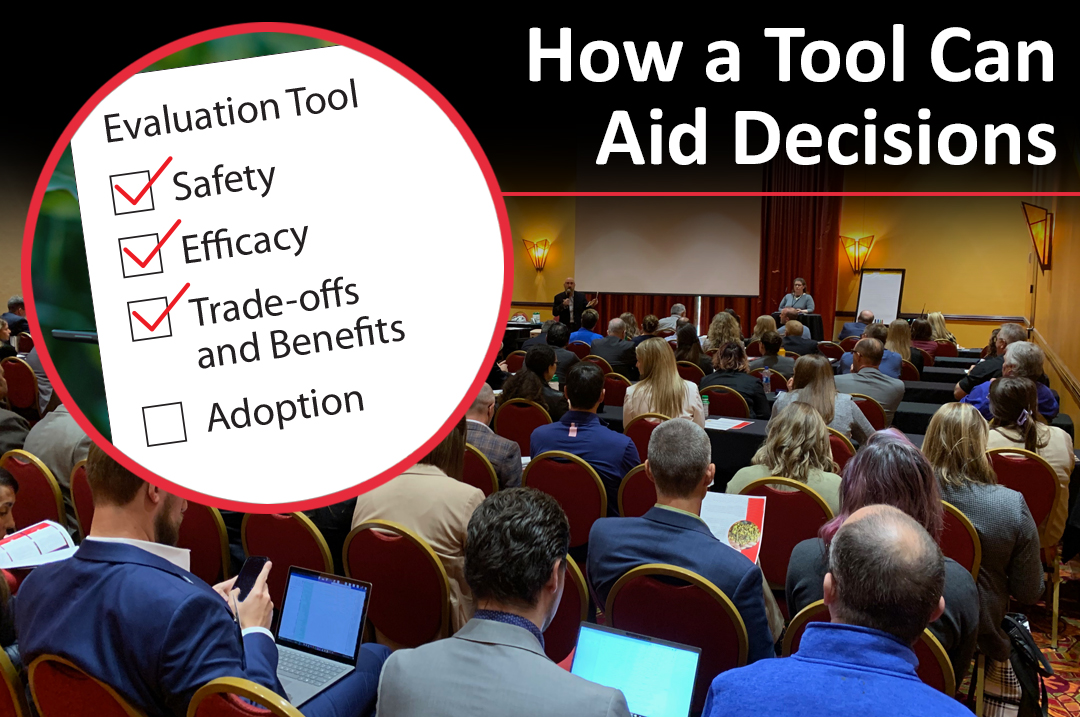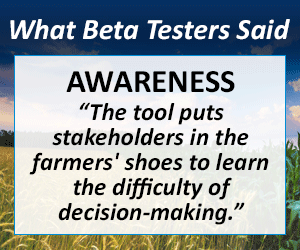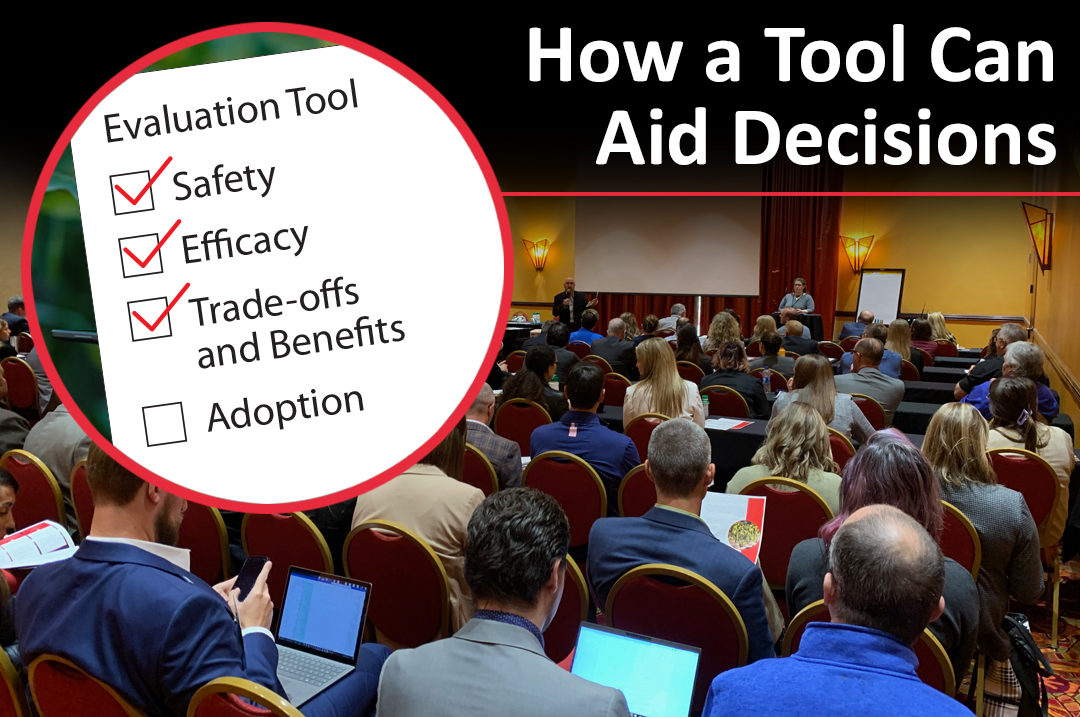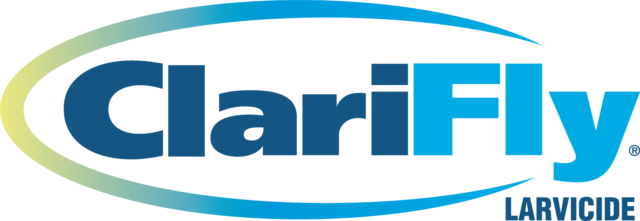Using feed additives to reduce enteric methane emissions from dairy cows is getting a lot of press lately. Scientific evidence with promising results is growing rapidly. This is great news for the dairy industry with nationwide environmental stewardship goals for achieving greenhouse gas neutrality by 2050.
While the implications are powerful, making the decision to use feed additives from a growing list of options is not simple. No two feed additives are alike, and the scientific evidence available on them vary widely in terms of animal and food safety, mitigation efficacy and impacts on animal performance.
Dairy farmers, their technical advisers and other supply chain stakeholders, such as milk buyers, know that a feed additive’s ability to reduce enteric methane is not the only factor to be considered in the decision-making process. To make it into the cow’s diet, these feed additives must also meet other criteria that are important to different dairy supply chain stakeholders and consumers.
According to Dr. Juan Tricarico, vice president of sustainability research for Dairy Management Inc. (DMI), to effectively use feed additives at-scale, dairy farmers require them to meet their farm needs plus satisfy other dairy stakeholder and consumer expectations.
“For the dairy farmer, those trade-offs can be difficult to understand and balance,” he said.
Standing in farmers’ boots
To find consensus, Tricarico facilitated conversations with experts across the dairy value chain to identify criteria and attributes that stakeholders – especially dairy farmers, their advisers and milk buyers – could use to evaluate and make decisions about using feed additives to mitigate enteric methane. The project team then developed a tool to guide feed additive evaluations to provide clarity around safety, efficacy and other impacts while gaining appreciation of the barriers, benefits and trade-offs that are important for adoption by the supply chain (Figure 1).
 Development of a feed additive evaluation tool to identify criteria and attributes stakeholders could use to evaluate and make decisions about using feed additives to mitigate enteric methane. Provided by Agnes Schafer-Kreiser.
Development of a feed additive evaluation tool to identify criteria and attributes stakeholders could use to evaluate and make decisions about using feed additives to mitigate enteric methane. Provided by Agnes Schafer-Kreiser. During the 2022 Dairy Industry Forum, held this past December in conjunction with the Sustainable Agriculture Summit, Tricarico was joined by Dr. Stephanie Masiello Schuette, DMI director of environmental research, to beta-test this new evaluation tool. In a standing-room-only session, nearly 150 stakeholders were invited to put themselves in the boots of a farmer and use the tool to evaluate and make important farm decisions about two fictional feed additives for enteric methane mitigation.
Below, Tricarico and Schuette share their observations, lessons learned and most-frequently-asked questions about feed additives and why the topic is so important to the industry.
Why is a feed evaluation tool needed?
TRICARICO: While the potential of feed additives is exciting, an actual reduction in enteric methane rests on the farmer’s ability to use them in cattle feed rations and real-life scenarios. To decide, farmers and their technical advisers must determine if there is enough proof that an additive is safe for consumers and cows, effectively reduces enteric methane, and provides production or economic benefits without environmental risk. It makes sense to have clear and transparent criteria that allows for the evaluation of current and future additive options. We need a level playing field. We need clarity and transparency across the value chain.
SCHUETTE: Dairy science got us here. There is excitement and pride that industry science has advanced to the point of having multiple tools in the form of feed additives that will allow a future where we can mitigate enteric methane from dairy cows. But this is complex and can be confusing to navigate. This evaluation tool was created to address the complexity so that, as science continues to produce more information, people can feel confident about their choices – whether that be for their farms or businesses.
What is the feed additive tool and how does it work?
TRICARICO: The tool assigns a simple point system to a few questions on topics identified as crucial to making decisions about feed additive use – safety, efficacy, trade-offs and benefits. The tool not only provides the opportunity to rank an additive relative to all the available points, but it also stimulates the evaluators to think more thoroughly about the topics included. We provide topics to consider and ask a few questions about them to help tool users decide what is important to them.
How does the tool benefit farmers?
TRICARICO: The tool broadens understanding. The value of this tool to the farmer is that the dairy value chain can put themselves in the farmers’ boots to understand how difficult these decisions are – particularly when farmers are dealing with a lot of uncertainty.
SCHUETTE: The tool gives farmers and other dairy value chain stakeholders the basis for decision-making. They make hundreds of decisions a day. So when someone approaches them on what they are going to do about feed additives to mitigate emissions, hopefully this tool – curated with input from experts – will help to guide their discussions and thought process. This tool is in support of their decision-making.
 Provided by Agnes Schafer-Kreiser.
Provided by Agnes Schafer-Kreiser.
What did you learn from this first round of beta-testing?
TRICARICO: I saw people in the breakout session in my shoes as a scientist, as well. They struggled with deciding based on incomplete information. When scientists are asked questions, they are expected to answer with 100% certainty. Now, dairy value chain stakeholders who participated in this session are requesting more information and providing feedback on which questions are priorities that must be answered to increase confidence in the decisions.
SCHUETTE: Dairy farmers who participated appreciated the exercise. Just as scientists struggle when asked questions about the efficacy of feed additives, dairy farmers in the room felt that participants experienced why it is so hard for them to navigate this space and make important decisions for their herds and farms. That was rewarding.
People are hungry for this kind of tool. During the exercise, we purposely provided incomplete information on two make-believe additives that were emerging and waiting on more science to mimic what’s available in the marketplace. Participants realized in real time the possible gaps in information and why the lack of information was important in determining confidence. For me, that was a win. This is complex. There is a reason why we came up with this kind of tool. The feedback told us there still is work to be done in this space around feed additives.
What do people want to know about feed additives?
TRICARICO: People were highly engaged. Industry competitors were respectfully working together. There is a level of eagerness for this evaluation tool. We also noted that one of our fictional additives was consistently ranked higher by participants – and believe me, we didn’t create one fictional product that was clearly superior to make it an easy exercise. That tells us that when people have tools with clear guidance, they think through the process – and regardless of where they sit in the value chain, they come to similar conclusions when focused on what is important.
SCHUETTE: When we asked for feedback about the evaluations tool, they made it clear they crave even more knowledge and information about feed additives for mitigating emissions. The criteria and the exercise helped point out what may be missing or what people still need to know about current additive options to have more confidence in their use. I was not prepared for the veracity with which people want immediate access to this tool and guidance.
What is driving the urgency around feed additives to mitigate emissions?
TRICARICO: There is a lot of talk in the industry about many feed additive options, but these options are all over the place in terms of scientific evidence that supports them, available information and unanswered questions. Yet, there is this terrible pressure to mitigate enteric methane. Everyone in the supply chain is in this same position of, “We feel the pressure. We know we must do something, but we don’t have a clear path at this stage.” Guidance tools like this will help the industry navigate the pressure and uncertainty.
SCHUETTE: The dairy industry’s toolbox contains both short-term and long-term mitigation tools of enteric methane and other greenhouse gases. Feed additives are seen as a short-term tool, so I think that is also driving industry’s excitement as a way to make timely and meaningful reductions.
What happens next with the evaluation tool?
TRICARICO: The first step was to use the work session to gather feedback to improve the evaluation tool. Ultimately, the next step is: We plan to publish the tool with accompanying guidance in 2023. Workshop participants also provided great observations that will lead to identifying best management practices to go along with the evaluation tool.
SCHUETTE: I expected more criticism for the tool, but people really liked it. I believe that speaks to how thoughtfully the evaluation tool was created from the insights provided by the experts involved in the facilitated conversations. We worked collaboratively across the industry and listened carefully to identify those criteria that should be prioritized. It’s not something we created in a vacuum. With our academic and industry partners, we did our due diligence.
This article was provided by ASK-Comm Strategies.






